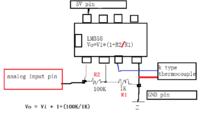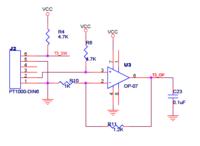imvirang
Newbie level 3
Hello,
i am working on Thermocouple Amplifier from amb to 350 deg. using LM 358.
But there is some fluation problem.
i am using K type Thermocouple.
So will you please help me??
i am working on Thermocouple Amplifier from amb to 350 deg. using LM 358.
But there is some fluation problem.
i am using K type Thermocouple.
So will you please help me??

